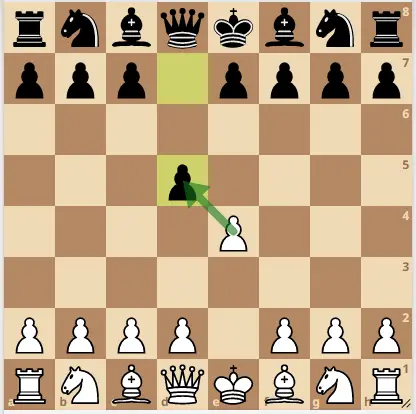Pawns are considered the soul of the chess game. Without them, there would be no chess game. If you’re just starting to learn how the chess pieces move then you may be asking the question, “Can a pawn move 2 spaces diagonally?”
In this article, we will discuss whether or not a pawn can move 2 spaces diagonally and how to use your pawns effectively to make the most out of your chess game.
Can A Pawn Move 2 Spaces Diagonally?
A pawn cannot move 2 spaces diagonally. However, it can capture a piece one space diagonally to the left or right. Pawns never move diagonally unless they are capturing an enemy piece. Pawns move only one space forward or 2 spaces forward on their first move.
Pawns move 1 space diagonally when capturing a piece but never 2 spaces diagonally

The only time a pawn moves 2 spaces is on its first move. It only moves 2 spaces forward. After that, it can only move one space at a time for the entire game. You can either move your pawn 1 square or 2 squares forward on its first move. The choice is yours depending on your strategy.
Can Pawn Move 2 Space Diagonally When En Passant?
The simple answer is NO. En passant is a special pawn capture in chess that can occur when a pawn moves two squares on its initial move and lands next to an opponent’s pawn on the fifth rank, which is the third rank for the opponent’s side.
To make an en passant capture, the opponent’s pawn moves diagonally to the square the moving pawn passed over, as if the moving pawn had only moved one square forward. The moving pawn is then removed from the board, as if it had been captured on the square it passed over.
White can en passant

En passant which is a French word for “in passing” is a rare occurrence in chess, but it can be an important tactic to know, especially in the opening phase of the game. It can also be a valuable defensive resource for players, as it can prevent an opponent’s pawn from advancing too far and gaining control of key squares on the board.
Why Is The Pawn So Weak In Chess?
In chess, the pawn is often considered one of the weaker pieces on the board due to its limited movement and attacking ability. Pawns are the only pieces that cannot move backwards, and they can only move forward one or two squares on their initial move and one square forward after that. Pawns can only attack diagonally, which limits their ability to control large areas of the board.
However, despite their limited movement and attacking ability, pawns play a vital role in the game of chess. Pawns can be used to control key squares on the board and restrict the movement of the opponent’s pieces. Pawns can also be advanced to create pawn chains, which can create strong defensive positions and provide support for other pieces.
Additionally, pawns can be used to block the opponent’s pieces, making it more difficult for the opponent to develop their pieces and launch attacks. Pawns can also be sacrificed to create openings in the opponent’s defenses or to gain control of key squares on the board.
In certain situations, pawns can also become very powerful, especially when they reach the opposite side of the board and are promoted to a more powerful piece such as a queen, rook, bishop, or knight.
In summary, while pawns may be considered weaker than other pieces in chess due to their limited movement and attacking ability, they play a vital role in controlling key squares on the board, blocking the opponent’s pieces, and supporting other pieces.
Which Chess Pieces Can Move 2 Spaces Diagonally?
While the pawn cannot move 2 spaces diagonally, there are other pieces in the royal family that has the ability to do so. The queen and the bishop are two pieces that can move 2 spaces diagonally or more.
The queen moves in any direction, any number of squares in a straight line, whereas the bishop moves diagonally any number of squares.
The bishop and queen are known as long ranged pieces because they can move from one end of the board to the next in a single move. Pawns on the other hand are not long ranged pieces. They can only move one space forward or 2 spaces on their first move.
Final Thoughts
In the standard rules of chess, a pawn is generally not allowed to move diagonally, except when it is capturing an opponent’s piece on a diagonal square. When a pawn captures an opposing piece, it moves diagonally one square forward to the left or right, depending on the direction of the capture.
Otherwise, a pawn can only move straight ahead, one square at a time, except for its first move, when it can move two squares forward. Additionally, there is a special move called en passant that allows a pawn to capture an opposing pawn that has just moved two squares forward on its first move, but this is also a diagonal move.


